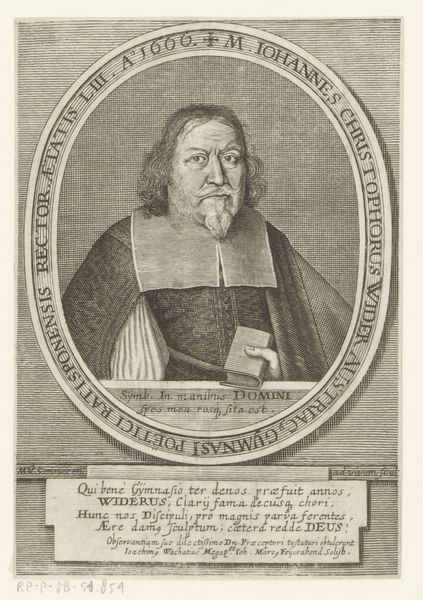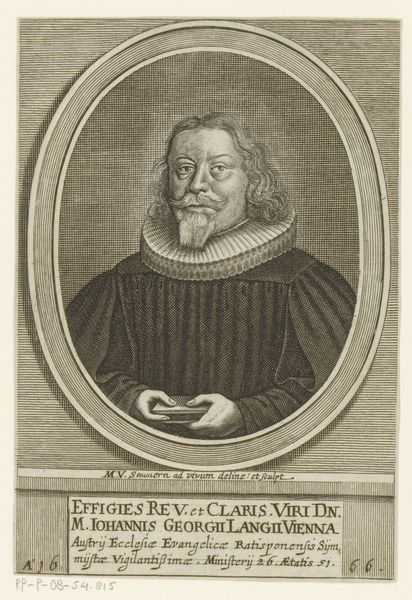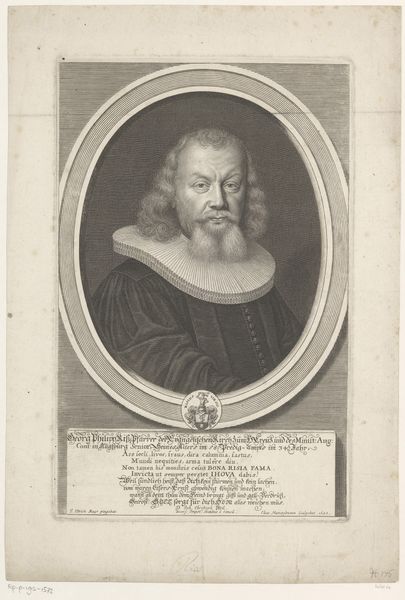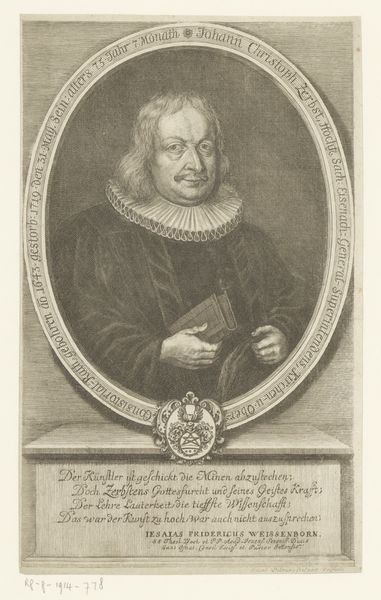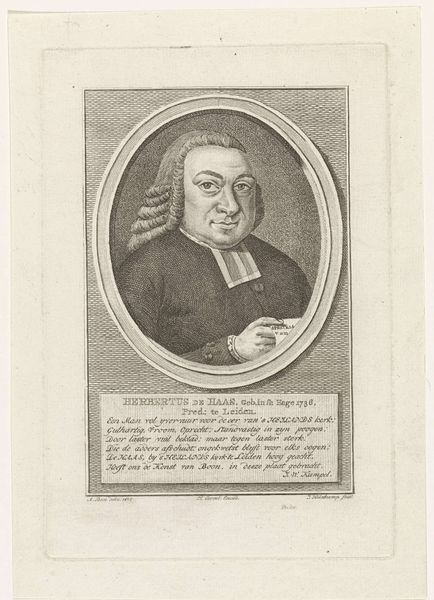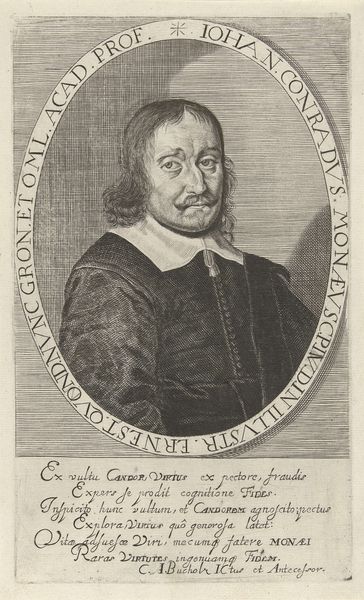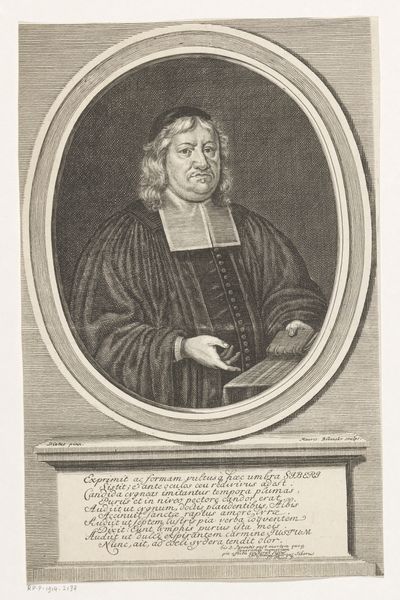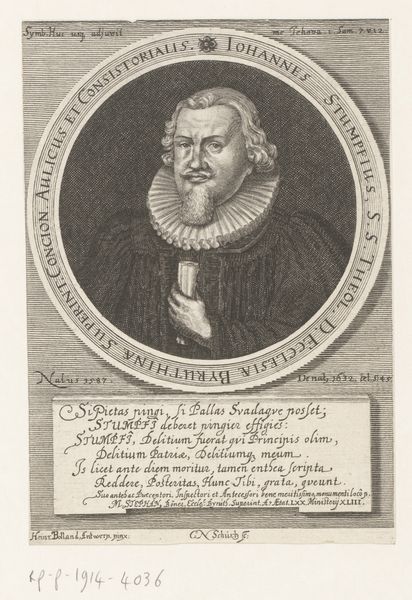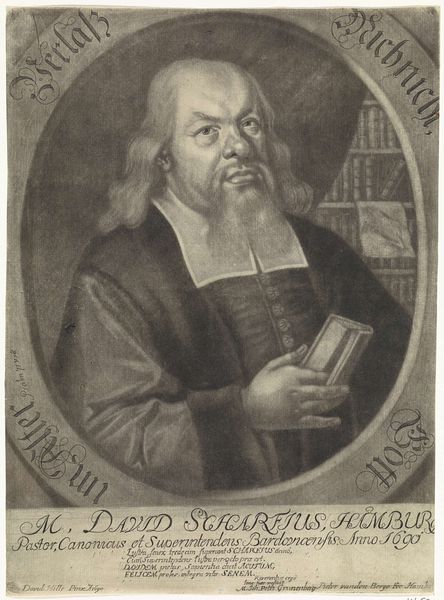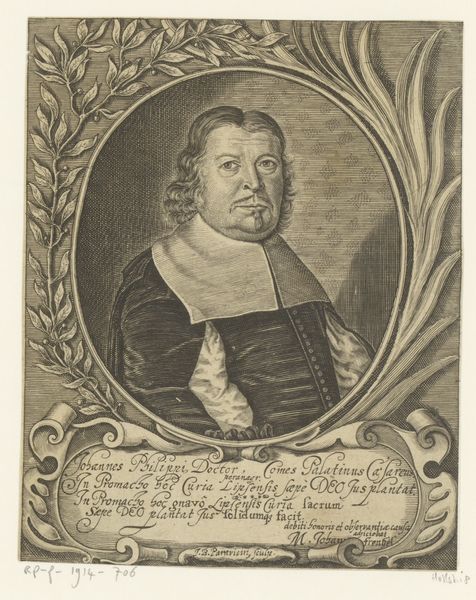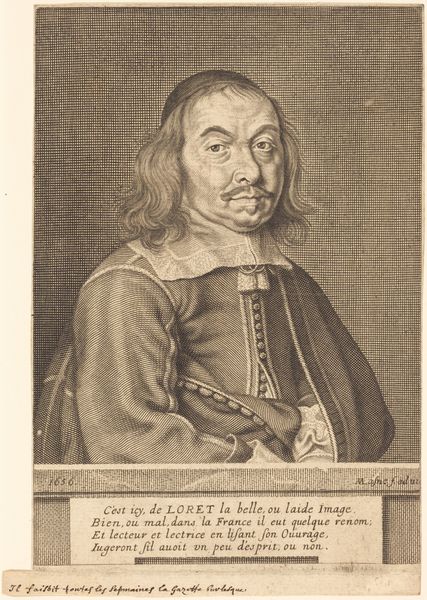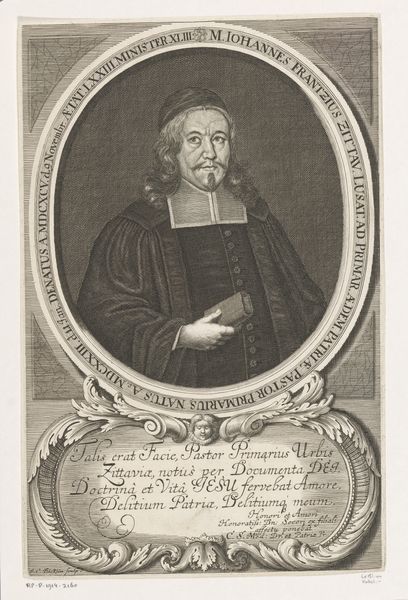
print, engraving
#
portrait
#
baroque
# print
#
old engraving style
#
caricature
#
history-painting
#
engraving
Dimensions: height 187 mm, width 139 mm
Copyright: Rijks Museum: Open Domain
Curator: Here, we see an engraving, "Portret van Henrich Freder burgemeester van Danzig," a portrait of Heinrich Freder, the mayor of Danzig, made between 1647 and 1654 by Frans Allen. It depicts Freder in elaborate Baroque style, surrounded by symbols of wealth and status. Editor: My initial feeling is one of contained power. His gaze is direct, and even in this black and white print, there's a sense of gravitas and formality, a sort of steely control radiating from the piece. Curator: Precisely. The image adheres to a visual vocabulary, common in portraits of influential figures during the Baroque era. Consider the use of the coat of arms, as well as the drawn curtains in the background which act as markers of prestige and authority. It creates a world that underscores Freder’s importance. Editor: That's absolutely visible. We should examine, however, how identity and power intertwine with societal context. His gaze can also feel like a challenge, even an imposition—raising issues about class, representation, and the politics embedded in portraiture. His hand gestures also signal towards that potential to influence political dynamics and affairs. Curator: Indeed. This composition serves as a visual script about rank during that specific historical setting. If we analyze its symbolism, his garb represents an elite political class with strict social expectations. Note, though, that his slightly melancholic or contemplative features subtly challenge a purely celebratory understanding. Editor: It's that very tension that provides meaning! The contrast reminds me that people—and political figures—aren't monolithic. Recognizing that complexity is crucial to an insightful examination, especially for leaders situated within a strict social strata. Curator: Yes, I concur completely! This print exemplifies the emotional resonance found in symbols of rank—both a reflection and potential subversion of hierarchical order. Editor: Thinking through its legacy in portraiture, I consider what the continued impact has to offer contemporary reflections. It remains potent in discussions of legacy, recognition, and agency.
Comments
No comments
Be the first to comment and join the conversation on the ultimate creative platform.
